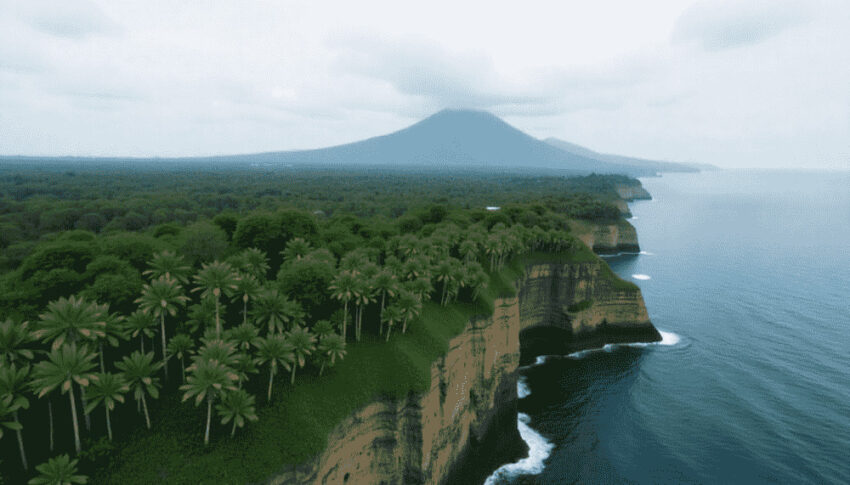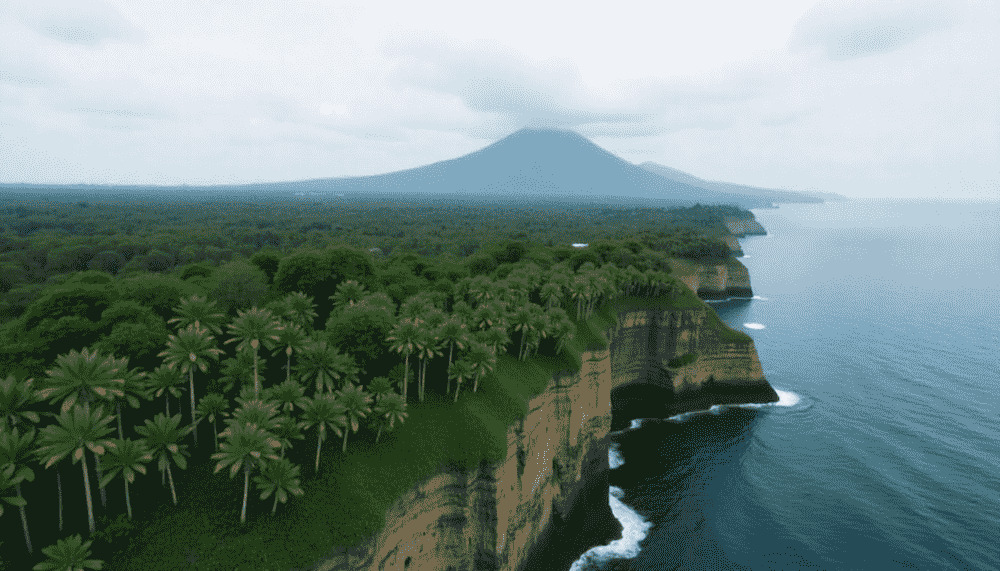Published on October 22, 2025

Bali, Indonesia's iconic tourist destination, is at risk of losing its lush landscapes and rich cultural heritage as tourism continues to develop rapidly. Environmental experts are calling for immediate action to preserve the island's natural beauty and cultural identity. The call to secure Bali's future comes as tourism pressure increases in coastal regions.
Known for its stunning landscapes, rich traditions and vibrant tourism sector, Bali has become a global magnet for travelers looking to experience its beauty and culture. However, the island's natural and cultural assets are now coming under increasing pressure as the tourism boom and development spreads to the coast. Environmentalists and tourism experts are calling on local authorities to take stronger measures to protect Bali's lush green landscapes and cultural heritage, long a defining feature of the island.
As Bali continues to experience rapid growth in its tourism infrastructure, experts warn that the island's valuable forests, mountains, rivers and wildlife are under threat from the uncontrolled spread of resorts and commercial development. This situation is particularly alarming in the coastal regions of Bali, where popular tourist resorts such as Kuta, Seminyak, Canggu and Uluwatu have experienced a significant expansion. Rising demand for luxury accommodation, tourism services and other infrastructure has raised concerns that the essence of Bali – the landscapes and cultural sites that attract visitors – may be at risk.
The increasing urbanization of Bali's coastal areas contributes to a number of environmental problems, including water resource depletion, deforestation and soil erosion. Bali's forests, which play a crucial role in maintaining the island's biodiversity and water supply, are threatened by rapid development and the spread of agriculture. In addition to the physical environmental impact, there are growing concerns about preserving Bali's cultural identity, which is closely linked to its natural environment. Temples, traditional villages, rice terraces and sacred forests are integral to the island's cultural fabric, but they are increasingly vulnerable to the pressures of urban development.
These growing concerns have been echoed by experts in the field, who are calling on Bali's leaders to take immediate action to protect the island's green spaces and cultural heritage. Experts have particularly emphasized the need for a targeted approach to conserve Bali's offshore regions and forests, which are crucial to maintaining ecological balance. While the island's beaches remain the main attraction for tourists, the inland areas with their sacred sites, forests and rice terraces play an equally important role in defining Bali's unique cultural identity.
At the heart of these concerns is a proposed policy to protect Bali's environment, which is currently in the draft stage. Although the directive is intended to address the conservation of forests and upstream areas, it has yet to be fully implemented. Furthermore, the proposed directive does not yet cover areas with the most intensive development activity, such as: B. Badung Regency. This region, home to many of Bali's busiest tourism hubs, is under significant pressure from both commercial development and the increasing number of visitors flocking to its resorts and attractions.
While the policy has been endorsed by leaders from several of Bali's regencies – Tabanan, Jembrana, Buleleng, Bangli, Karangasem and Klungkung – regencies in Badung, where most of Bali's tourism development is concentrated, have yet to fully embrace the policy. In July 2025, the governor of Bali acknowledged that the six regencies that had agreed to the policy were from less developed parts of the island, leaving Bali's key areas of tourism development largely unaffected by the proposed measures.
The growth of Bali's tourism sector has been a double-edged sword. On the one hand, tourism has become an important economic driver, creating jobs, boosting local businesses and contributing to the island's economy. On the other hand, this growth has led to overdevelopment, strain on infrastructure and environmental degradation. Bali's traditional villages, agricultural lands and sacred sites are increasingly being overrun by commercial ventures. Many environmentalists and cultural advocates argue that the current trajectory of development will irreversibly alter Bali's identity unless stronger protective measures are introduced.
Rapid urbanization in coastal areas such as Badung has already led to the disappearance of several traditional villages and cultural landmarks. Bali's famous rice terraces, a UNESCO World Heritage Site, are in danger of being overshadowed by sprawling resorts and real estate projects. The Subak irrigation system, used for centuries to manage Bali's rice fields, is facing the risk of disruption as new developments encroach on these vital agricultural areas. These changes threaten not only the island's ecology, but also its cultural heritage, which is closely linked to the land.
Environmental experts emphasize that preserving Bali's natural landscape is not only an environmental problem, but also an economic problem. Bali's appeal as a tourist destination lies in its lush landscapes, green rice fields and quiet rural areas, which provide a stark contrast to the hustle and bustle of city life. As tourists increasingly look for sustainable and eco-friendly travel options, Bali's ability to preserve its green spaces and traditional way of life will play a crucial role in maintaining its competitive edge in the global tourism market.
Although some initiatives have emerged to promote sustainable tourism, these efforts are still in their infancy. Eco-resorts, organic farming and cultural conservation programs have gained importance, but remain limited to specific areas and do not yet cover the entire island. For Bali to become a leader in sustainable tourism, it must take a more proactive approach to addressing the challenges posed by rapid urbanization. Protecting Bali's natural resources and cultural heritage is critical to ensuring that tourism continues to thrive without compromising the long-term sustainability of the island.
Furthermore, preserving Bali's environment and culture is essential not only for tourism, but also for the well-being of the local population. Many Balinese rely on the island's natural resources for their livelihood, from agriculture and fishing to handicrafts and traditional performances. The loss of Bali's green spaces would disrupt these industries and impact the quality of life of local communities. Therefore, protecting the island's environment is not only about protecting its beauty for tourists, but also about ensuring the continued prosperity and well-being of its people.
There is hope that Bali's leaders will adopt a more integrated development approach that balances growth with environmental and cultural protection. The island has the potential to serve as a model for sustainable tourism, where development and conservation go hand in hand. The key to this success lies in implementing strict policies that protect Bali's green landscapes and cultural heritage while promoting responsible and sustainable tourism practices.
As Bali grapples with the challenges of modernization, it is clear that now is the time to act. The island's leaders must take bold steps to protect the green spaces, cultural sites and traditional practices that make Bali so unique. In doing so, they ensure that the island remains a destination where both visitors and locals can continue to experience the rich beauty and cultural heritage that have made Bali a popular destination for generations. It's a delicate balance, but with the right policies and initiatives, Bali can achieve a future where development and conservation coexist harmoniously.

